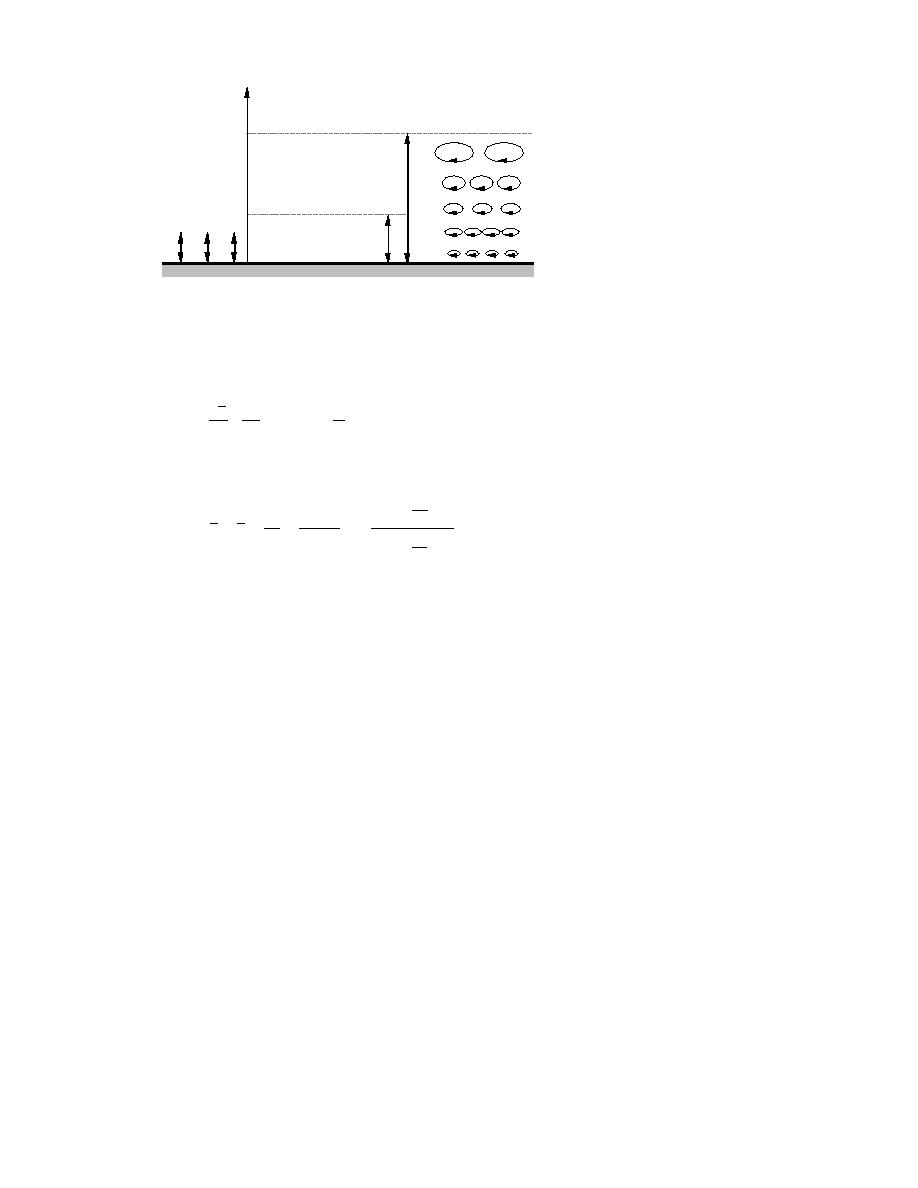
z
Free Atmosphere
(region of geostrophic balance)
500-1000 m
Planetary Boundary Layer
(turbulent boundary layer)
30-100 m
τ
Surface Boundary Layer
H
E
(constant flux layer)
Figure 1. Vertical structure of the
atmosphere (after Kai 1982).
Ground
homogeneous in behavior throughout its depth and provides no support to the suggestion that the
layer may be divided into different regions according to stability.
Based on an exponential wind profile in a turbulent boundary layer with the air thermally
stratified, Swinbank (1964) derived the vertical gradient as
-1
u u*
1 - z
=
1 - exp
z kL
L
or in integrated form as
exp - 2 - 1
z
z -z
L
u
u2 - u1 = * - 2 1 + ln
exp - z1 - 1
k
L
L
where k is the Karman constant. He claimed that this solution is expected to be applicable in all
stabilities and to all heights below which the shearing stress and the vertical heat flux remain
constant. Comparison with experimental data shows that buoyancy modifies the transfer of heat
more strongly than does momentum, and the difference increases with height above the surface.
II. THEORETICAL RELATIONS
AND METHOD OF ANALYSIS
The vertical structure of the atmosphere may be classified into three layers, as shown in Figure
1. The free atmosphere is free from the influences of surface friction, and its motion is treated as
laminar flow. The planetary boundary layer, with considerable influence from surface friction, is
analogous to the turbulent boundary layer found on a flat plate, and its motion is treated as turbulent
flow. The surface boundary layer is the lowest 30 m or so of the planetary boundary layer, where the
motion is controlled predominantly by the presence of surface friction. This layer is also referred to
as the "constant flux layer," i.e., the vertical fluxes of physical properties by turbulence such as
Reynolds stress and sensible heat flux are assumed to be constant to a good approximation.
A. General equation of motion
The structure of the surface boundary layer will first be explained with the aid of the fundamen-
tal principle governing the motion of the atmosphere near the surface of the ground. This principle
is expressed by the NavierStokes equations for a viscous, incompressible, Newtonian medium in a
uniform gravitational field and in a rotating system, which can be written in a rectangular coordi-
nate system as
3



 Previous Page
Previous Page
